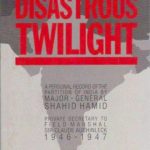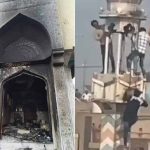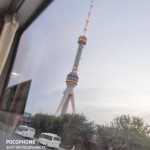Khalid Khokhar
The 64 years old Kashmir imbroglio has ignited Kashmirs more particularly the younger generation for launching a huge struggle for independence against the suppressive policies of Indian occupied forces in Kashmir. The most noticeable difference from the past is the bitterness and anger among the youth, who grew up in a climate of violence, humiliation and hatred since partition of the sub-continent India and Pakistan in 1947. The upsurge of these young angry people reached to the level where they are leaders by themselves a “leaderless people’s movement”.
This spontaneous, widespread and popular response is the prototype of a fateful day which is now being observed as a ‘Martyrs Day’ (Youm-e-Shudahae Kashmir) by Kashmiris all over the world. 13th July is the milestone in the history of Kashmiris struggle against foreign occupations. It was on this day in 1931 that 21 Kashmiris sacrificed their valuable lives for the supreme cause of freedom of Kashmir from the clutches of despotic Dogra rulers. The history of Dogra rule (1846-1947) on Kashmir is replete with tyrannical and subhuman behavior of Kashmiris by Dogra forces. Kashmiris, in Dogra rule, were leading a life worse than that of animals.
They were forced to pay tributes to their ‘masters’ in Srinagar in the form of forced labour (begair) and heavy taxes. Throughout Dogra regime, slave labour, capital punishment for cow slaughter and living under terror was order of the day. People were forced to work as indentured labours and no one had any right to self-respect, identity or freedom of speech. Even the religious rights had been snatched away from the Muslims of the state.
It was on 19th April 1931 that the Dogra DIG Chowdry Ram Chand stopped Imam Munshi Muhammad Ishaq from giving Eid Khutba (sermon) in the Municipal Park of Jammu. This incident sparked off widespread protest demonstrations for many days in Jammu city. Ban on Eid Khutba in Jammu was followed by desecration of the Holy Qur’an at the hands of Dogra troops, in Jammu.
This outrageous act sparked widespread resentment throughout the state. In Srinagar, people gathered in Jamia Masjid Srinagar to denounce this blasphemy and demanded punishment for the culprits and realization of basic rights for Kashmiris. One such gathering was held in Khankah-e-Muella Srinagar, which was addressed by prominent Kashmiris.
A youth, Abdul Qadeer was also listening to the speeches of the Kashmiri leaders. When the meeting was concluded, Abdul Qadeer, pointing his finger to the Maharaja’s palace raised full-throated slogans “destroy its every brick”. He was accused of sedition and arrested instantly. Abdul Qadir was to be tried in the court but due to large public resentment the court was shifted to Central Jail Srinagar. On 12th July, intense public demonstrations were held against the shifting of the court to the Central Jail, throughout the city.
On July 13, 1931, thousands of people thronged the central jail Srinagar to witness the in-camera trial of Abdul Qadeer. At Zuhar time, people surrounding the Central Jail, demanded an open trial of Abdul Qadeer. To disperse them, the Dogra Governor, Ray Zada Tartilok Chand ordered soldiers to open fire. As a result, a wholesale slaughter ensued in which 21 demonstrators were killed on the spot and scores of them seriously injured.
The people carried the dead and the injured with them, formed a procession and paraded the highways and streets of Srinagar, chanting slogans against Dogra brutalities. Complete strike was observed in the city, which was followed by weeklong mourning. This incident shook the whole state and the traffic from Srinagar to Rawalpindi and Srinagar to Jammu came to halt from 13th to 26th July. Since then, the day is observed as Kashmir Martyrs’ Day. 13 July 1931 became known in Kashmiri history as “Martyrs Day”, the official beginning of a struggle for independence from alien rule (at that time the Hindu Maharaja and subsequently the Republic of India) which has not yet ended.
Nevertheless, the world failed to take any worthwhile notice of the incident of 13 July 1931, but the people of Kashmir always remember those who sacrificed their precious lives for the just cause. Kashmiri youth derives immense source of motivation every time the month of July approaches and commemorate it as a black day in the annals of the Kashmir history.
At this time of distress and agony, the people of Pakistan sides with the oppressed ones and share the grief of Kashmiri freedom lovers. Pakistan also observes Youm-e-Shudahae Kashmir on 13 July, and launch a protest against the oppressive polices of IOF on the hapless Kashmiris.Elections for the Indian state of Jammu and Kashmir were held over seven days in November and December 2008. The previous government led by the Jammu and Kashmir People’s Democratic Party (PDP) in coalition with the Indian National Congress (INC) collapsed when the PDP withdrew.
Following the election, the Jammu & Kashmir National Conference (NC) agreed a coalition with Congress and their leader, Omar Abdullah became the state’s youngest ever Chief Minister. However, the elected Government of Omar Abdullah failed to bring any tangible change on ground san making some public pronouncements about troops’ reduction, revocation of black laws, etc. Kashmiris have started thinking that they cannot convince India through peaceful means and there seems to be an ultimate growing support for armed struggle in IOK.
Some of the major reasons for recent violence in IOK are; Amarnath Land Issue-2008, Shopian rape & murder case, and killing of teenage Zahid and Wamik Farooq. These all developments have added fuel to insurgency and youth stood steadfast against the human rights violations against the hopeless Kashmiris.
There has been some break through in the 2nd and 3rd round of Pak-India dialogue process on secretary-level since the Mumbai carnage, but more needs to be done to address the aspirations of the people of Kashmir. Foreign Secretary Nirupama Rao said on the eve of resumed dialogue process in June 23, 2011, “I have come to Pakistan with an open mind and a constructive spirit in order to work towards building trust and confidence in our relationship and thereby leading to an eventual normalisation of relations for the well being and prosperity of our two peoples.”
Pakistan traveled extra mile, demonstrated flexibility while India is yet to reciprocate Pakistan’s proposals on Kashmir dispute. While exploring the possibility of a dialogue with Kashmiri freedom fighters, a viable solution to the Kashmir problem will have to be found for regional autonomy. That alone can build the necessary confidence and goodwill, which India so badly needs.
The unrest could yet again become a serious problem for India, with unpleasant implications for its fraught relations with Pakistan. The popular mood in Kashmir is the sole demand of azaadi – as a sovereign, independent state or for Kashmir’s merger with Pakistan.
The Indian state must radically rethink its Kashmir policy. It must reach out to the Kashmiri people with the offer of a dialogue in earnest and put the issue of autonomy on the fore-front.
In all the fairness, India should give way to the Kashmiri struggle for the right of self-determination, and opt to demilitarize the area as a “gift” on their 80th anniversary of Kashmir ‘Martyrs Day’. At least, it may balm some of the wounds which Indian forces have been continuously inflicting on the Kashmiris since 1947.






